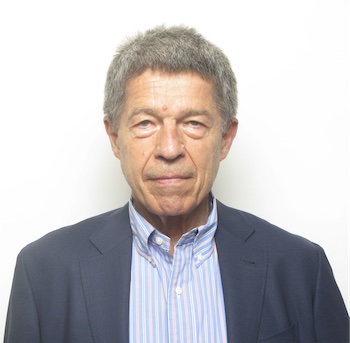

JOACHIM SAUER

Born April 19, 1949 in Hosena, (East) Germany.
Senior Researcher, Humboldt-Universität zu Berlin, Germany. External Scientific Member, Fritz-Haber-Institut, Max-Planck-Gesellschaft, Berlin
Email:js@chemie.hu-berlin.de
Web: external link
Foreign Member, Accademia delle Scienze di Torino (2021); Bunsen Medal, German Bunsen Society for Physical Chemistry (2020); Hershel and Hilda Rich Visiting Professor, Technion, Haifa (2019); Schrödinger Medal, WATOC (2019); Foreign Member, Royal Society, London/UK (2018); Dr. h.c., Brandenburg University of Technology Cottbus-Senftenberg (2018); Member, European Academy of Sciences, EURASC (2016); V. N. Ipatieff Lectureship, Northwestern University, Evanston/IL (2015); Francis Gault Lectureship Award, European Federation of Catalysis Societies (2015); Charles A. Coulson Lecture, University of Athens, Georgia (2013); Miller Visiting Professorship, UC Berkeley, California (2013); Honorary Doctorate (DSc), University College London (2013); Liebig-Denkmünze, German Chemical Society, GDCh (2010); Kolos Medal, Warsaw University and Polish Chemical Society (2009); Professor Invité Université Piere et Marie Curie, Paris (2009); Member, Academia Europaea (2009); Member, German National Academy of Sciences Leopoldina (2007); Alexander von Humboldt-Award, Belgian National Fund for Scientific Research (1998); Member, Berlin-Brandenburg Academy of Sciences and Humanities (1995); Chemistry Award, Academy of Sciences of Göttingen (1991); Dozentenpreis, Funds of the Chemical Industry (1991); Friedrich-Wöhler-Preis, Chemical Society of the GDR (1982).
Author of:
Important Contributions:
Development of quantum chemical ab initio methods for surface science and heterogeneous catalysis
- Proper design of cluster models and molecular models
- Development of QM/MM with periodic boundary conditions together with ab initio parameterization of polarizable force fields (shell model)
- Development of QM/QM methods with periodic boundary conditions to the level that chemical accuracy is reached for large simulation cells (order of 1,000 atoms)
- Ab initio free energy calculations for molecule - surface interactions using anharmonic vibrational energies
- Ab initio Grand Canonical Monte Carlo simulations on a lattice of sites. Solving problems in heterogeneous catalysis and gas sorption
Solving problems in heterogeneous catalysis and gas sorption
- Identification of bridging hydroxyl groups as active Brønsted sites of zeolite catalysts and introduction of the deprotonation energy as a reactivity descriptor
- Identification of surface species that molecules like ammonia, methanol, water, alkenes and alkanes form on internal zeolite surfaces based on spectroscopic signatures
- Bridging the gap between experiments on "real" (powder) catalysts and on model catalysts such as thin oxide films and gas phase oxide clusters
- Prediction of structure models for ultra-thin silica and zeolite films on metal substrates
- New mechanism for the oxidative coupling of methane (C-H bond splits heterolytically, not homolytically as assumed in the established Lunsford mechanism)
- Demonstration that the supporting oxide may be actively involved in selective oxidations by transition metal oxides (vanadia) when a reducible oxide like ceria (or titania) is the support instead of silica or alumina
- Ab initio prediction of isotherms for gas adsorption and separation (CH4, CO2) in metal-organic frameworks with chemical accuracy.